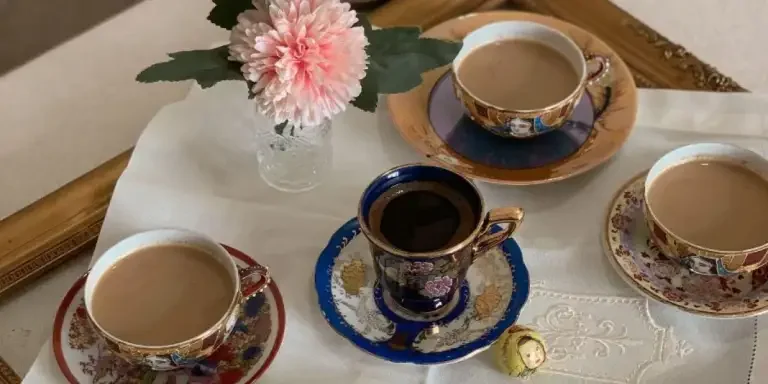As we step into 2024, the world of tea sets is witnessing a remarkable transformation, blending age-old traditions with contemporary design sensibilities. Tea sets, more than mere vessels for brewing and serving, have evolved into symbols of cultural heritage and modern lifestyle statements. This year, we’re seeing an exciting array of trends emerge, where functionality meets art, and sustainability becomes as crucial as aesthetic appeal. These innovations are not just reshaping our tea-drinking experience but are also setting new standards in home decor and personal style. In this exploration, we delve into the latest trends, designs, and materials that are defining the future of tea sets in 2024.
Table of Contents
1. Market overview
2. Key design and material innovations
3. Top-sellers driving market trends
1. Market overview

The global tea set market is at a juncture where tradition meets innovation. The increasing market value, combined with the evolving consumer preferences, is setting the stage for an exciting era in the tea set industry, marked by diverse designs, sustainable materials, and a blend of cultural influences.
This market is experiencing a significant surge, captivating global investors and major players. According to Precision Business Analysis, the global tea set market was valued at USD 20,455.85 million in 2024 and is projected to expand at a Compound Annual Growth Rate (CAGR) of 7.8% during the forecast period, reaching USD 32,093.64 million by 2027. This robust growth is indicative of the market’s dynamic nature and its adaptability to evolving consumer preferences and technological advancements.
Consumer behavior is increasingly influenced by a blend of traditional tea-drinking customs and modern lifestyle choices. The shift towards specialty teas, reflecting a preference for quality and uniqueness, is significantly impacting market trends. These preferences are not only reshaping purchasing patterns but also influencing the design and functionality of tea sets. Modern consumers are seeking tea sets that are not just practical but also align with their personal style and environmental consciousness. This trend is driving innovation in tea set materials and designs, with a focus on sustainability, aesthetics, and user experience.
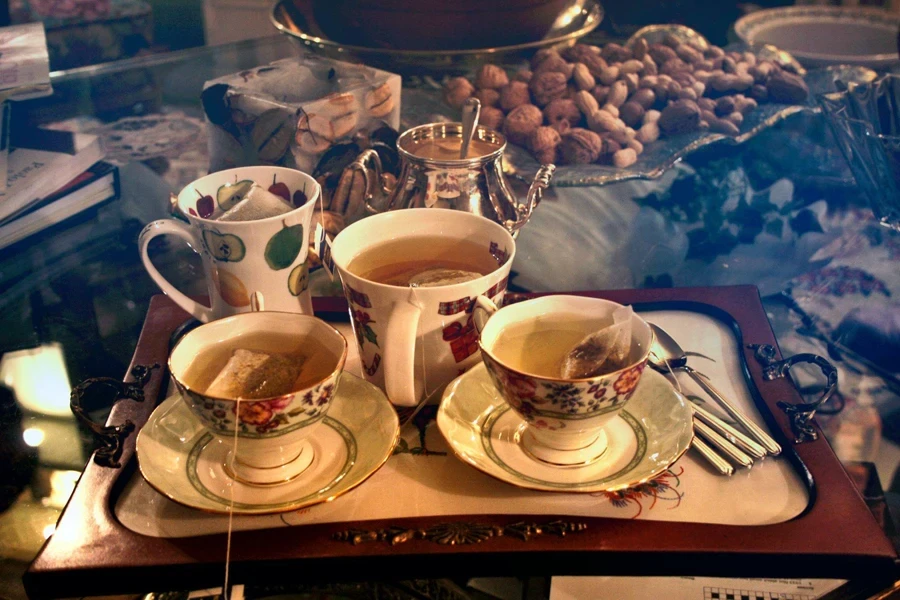
The tea set market is also being shaped by regional trends. North America and Europe continue to show a strong preference for elegant and classic designs, while markets in Asia-Pacific, particularly China and Japan, are leaning towards tea sets that reflect their rich cultural heritage. These regional preferences are crucial in understanding the global market dynamics and the diverse range of tea sets that are becoming popular.
2. Key design and material innovations
The landscape of tea set, design, and material innovation is undergoing a remarkable transformation, fueled by a blend of aesthetic refinement, functional advancement, and cultural infusion. This evolution is not just redefining how tea sets are viewed and used but is also a reflection of broader consumer trends towards sustainability, cultural appreciation, and technological integration in household items. As we delve into the latest trends, it’s evident that tea sets are transcending their traditional roles, emerging as both functional items and statement pieces in household decor.
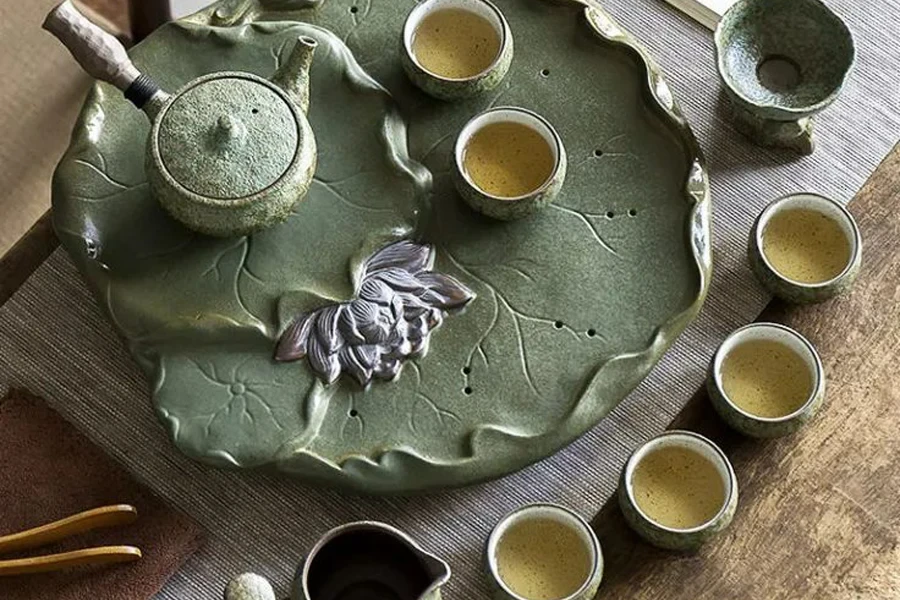
One prominent trend in tea set design is the integration of cultural elements with modern aesthetics. For instance, Japanese and Chinese tea sets, known for their intricate craftsmanship, are being reimagined with contemporary touches. This fusion creates a unique blend that appeals to a global audience, offering both a nod to tradition and a modern twist. The popularity of such culturally rich designs is a testament to the global consumer’s growing appreciation for diverse, globally-influenced aesthetics in their tea sets.
In terms of material innovation, there is a significant shift towards sustainability and durability. Manufacturers are increasingly exploring eco-friendly materials like bamboo, recycled ceramics, and biodegradable plastics. These materials are not only environmentally responsible but also offer durability and practicality. For instance, bamboo tea sets are gaining popularity for their lightweight, sturdy nature, and natural aesthetic, aligning with the growing consumer preference for sustainable and eco-friendly products.
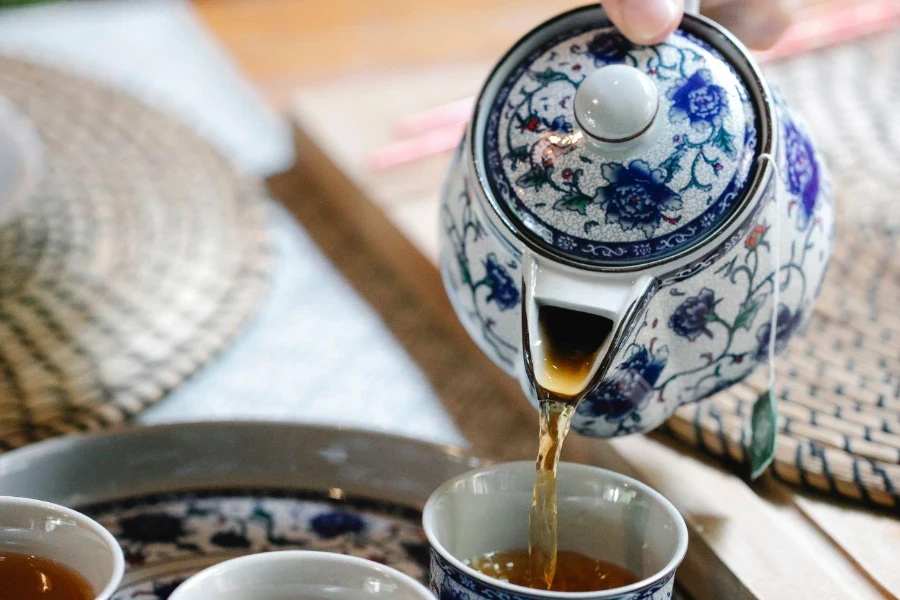
Another key material trend is the resurgence of porcelain and bone china, known for their elegance and timelessness. These materials are being redefined with modern designs, incorporating bold colors, minimalist patterns, and sleek lines. The result is a range of tea sets that are both classic and contemporary, capable of fitting into a variety of interior design themes from traditional to ultra-modern.
The functionality of tea sets is also being enhanced with technological advancements. Features like temperature-regulating ceramics and smart connectivity for brewing control are emerging, catering to the tech-savvy consumer who seeks convenience and precision in their tea-making experience. These innovations reflect a market that is keenly attuned to the evolving needs and preferences of its consumers.
3. Top-sellers driving market trends
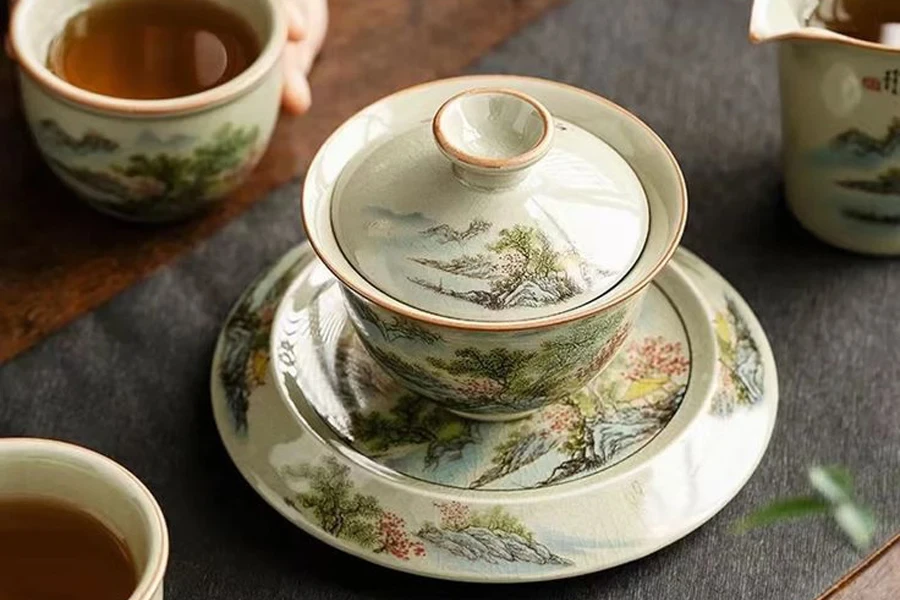
In the dynamic world of tea set trends for 2024, several top-selling brands and their distinct product lines are shaping consumer preferences and directing market movements. These brands, through their innovative designs and quality craftsmanship, are not just selling products but also influencing lifestyle choices and aesthetic preferences in the tea set market.
One prominent brand that has been setting trends is Wedgwood, renowned for its fine bone china and elegant designs. Wedgwood’s tea sets, characterized by classic patterns blended with modern sensibilities, appeal to both traditionalists and contemporary style enthusiasts. Their tea sets, such as the iconic Wild Strawberry and Renaissance Gold collections, are not just functional items but also pieces of art, enhancing the overall tea-drinking experience. These collections, with their combination of timeless elegance and modern design elements, are influencing a shift towards more sophisticated and refined tea sets in the market.
Another notable trendsetter in the market is the Japanese-inspired tea sets, which are gaining popularity for their minimalist design and cultural richness. These sets, often made of high-quality ceramics or porcelain, emphasize simplicity and functionality. The Japanese aesthetic, characterized by clean lines and subdued colors, is influencing consumer preferences towards more understated and elegant tea sets. This trend is particularly evident in urban settings where space is at a premium, and the need for multi-functional, space-saving items is high.
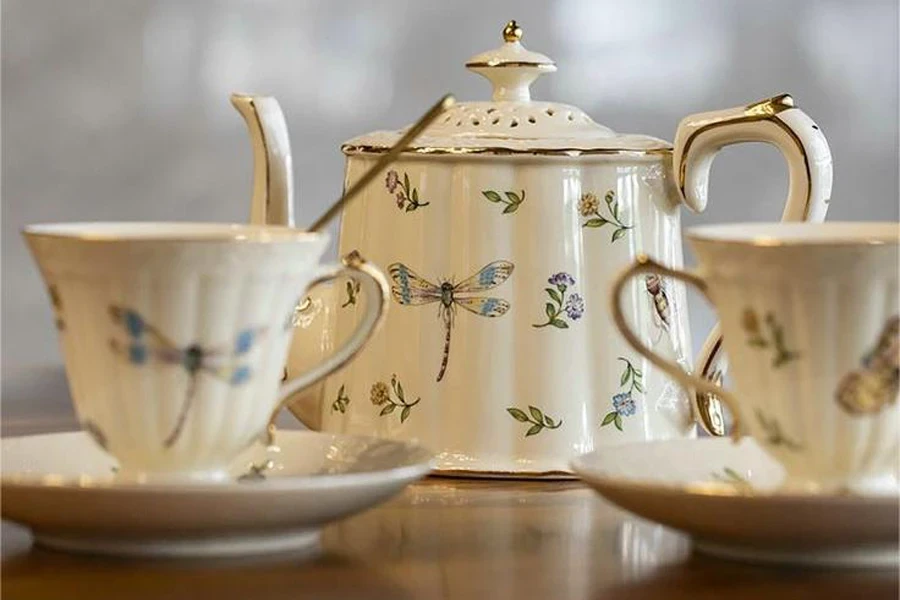
Additionally, brands that focus on eco-friendly and sustainable materials are also driving market trends. Tea sets made from bamboo, recycled ceramics, and other sustainable materials are not just environmentally responsible choices but also resonate with the growing consumer awareness about environmental conservation. These eco-friendly sets are becoming increasingly popular among younger consumers, who are more environmentally conscious and prefer products that align with their values.
The influence of these top-selling tea sets and brands extends beyond sales figures. They are shaping how consumers view tea sets as part of their lifestyle. From being mere vessels for brewing tea, tea sets are now seen as integral components of home decor, personal style statements, and reflections of environmental responsibility. The trend towards more culturally diverse, environmentally friendly, and aesthetically pleasing tea sets is a clear indication of where the market is headed in the coming years.
Conclusion
As we reflect on the evolving landscape of tea sets in 2024, it’s clear that they have transcended their traditional role to become a fusion of heritage and contemporary design, showcasing a remarkable blend where classic aesthetics meet modern functionality Looking ahead, the future of tea sets appears bright and promising, with an ongoing evolution in design, materials, and cultural influences. As consumer preferences continue to evolve, we can anticipate further advancements that not only enhance the tea-drinking experience but also reflect the changing dynamics of our global culture. The journey of tea sets from traditional utility to modern art pieces is a fascinating narrative of our times, signaling a future where tradition and modernity coexist in harmony and creativity.
